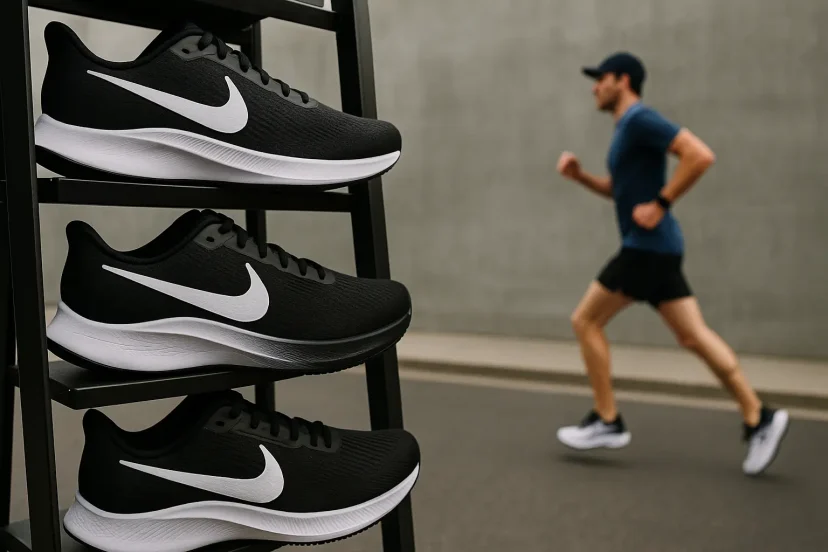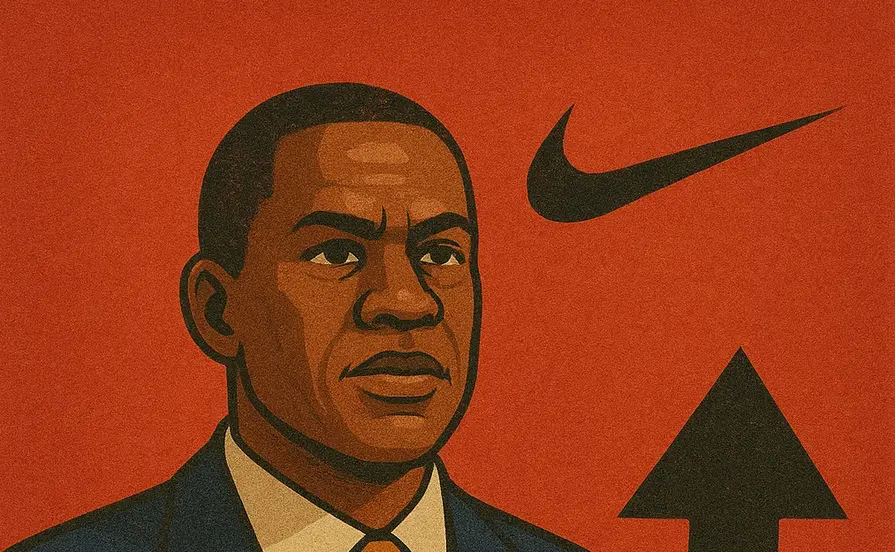Nike is on a mission to get its stride back. The world’s largest sportswear company faced its worst trading day in history last year, wiping out $28 billion of market cap in a single day. Now, longtime Nike executive Elliot Hill has come out of retirement to lead the company’s turnaround as CEO, with a clear vision: “When we grow sport, we grow the overall marketplace and when we grow the overall marketplace, I like our chances of growing.”
The Challenge: A Marathon, Not a Sprint
Nike’s stock is currently less than half of what it was during the pandemic peak, and the turnaround is proving to be a marathon rather than a sprint. The company has faced serious challenges stemming from its decision to pull back from stores, overreliance on direct-to-consumer channels, and focus on classic styles rather than innovation.
The competition has gotten significantly tougher, with rivals like On Running and Hoka gaining market share. As one analyst noted, “Nike is on hold. I’m not kidding. This is the first true challenger to Nike.” Hill acknowledges this reality, stating, “The competition is strong today. I think part of it is because we opened up shelf space and opened to buy in the wholesale business, and so we’re having to earn that back.”

The Turnaround Strategy: Back to Sports
At the center of Hill’s turnaround plan is a renewed focus on sports. On his first day as CEO, October 14th, Hill stood on stage with two clear messages: “We’re a sport company and we’re a growth company, we’re going back to sport. We’re going to put the athlete back at the center of everything that we do.”
This represents a fundamental shift from Nike’s recent strategy under previous CEO John Donahoe, who focused heavily on direct-to-consumer channels and severed ties with wholesale retailers. The company’s overreliance on digital commerce during COVID-19, while initially successful, ultimately hurt the brand by alienating consumers who prefer shopping in physical stores.
The Sports Research Lab: Innovation at the Core
Inside Nike’s 400-acre campus sits the Sports Research Lab, where scientists study how athletes move to develop new products. The lab features over 400 motion capture cameras and 96 force plates, designed to capture data on athletes no matter where they go. This research helps Nike understand athletes’ needs, whether they’re endurance-focused, explosive, high-arch, or low-arch runners.
The lab represents Nike’s commitment to innovation and understanding its athletes at a granular level. As Hill explains, “We need to understand our athletes and how they fit into a population. Are you endurance? Are you explosive? Are you high arch? Low arch?” This data-driven approach to product development is crucial for staying ahead of competitors.
Organizational Restructuring: Sport-Focused Teams
A major component of Hill’s plan involves repositioning the company’s internal teams around sports. In early September, Nike reorganized each brand (Nike, Jordan, and Converse) by sport categories like Nike running, Nike basketball, and Nike training. Each segment now has small cross-functional teams focused on understanding the unique needs of consumers and competition in their specific sport.
This reorganization recognizes that consumers and competition differ significantly across sports. A basketball consumer has different needs than a running consumer, and the competitive landscape varies accordingly. By organizing around sports rather than product categories, Nike can better serve each athlete’s specific requirements.
The China Challenge: A Long-Term Opportunity
Nike’s comeback heavily depends on China, where sales fell more than 9% in the first quarter of 2026 to $1.5 billion. However, Hill sees this as a long-term opportunity rather than a short-term problem. With 1.4 billion consumers embracing sport, running, fitness, and basketball, China represents a massive growth potential.
The challenge in China is different from the United States. Physical retail in China operates as monobrand stores (Nike only), and Hill believes the company went too sportswear-oriented and not sport-focused enough. Nike is now reevaluating its store concepts across 5,000 locations in China, which will take time to roll out but could significantly impact the company’s global performance.
China: Challenge Today, Opportunity Tomorrow
Nike’s strategy reset in China isn’t a retreat—it’s repositioning. With 1.4 billion potential customers and a rising fitness culture, the world’s largest consumer market remains Nike’s biggest long-term growth catalyst. The next decade of performance could be defined by how well brands adapt—not how quickly they react.
Explore Global Retail & Strategy Roles →Inventory Cleanup: Making Room for Innovation
One of Hill’s immediate priorities is cleaning out excess inventory to make room for new products. The company is about a quarter or two away from completing this process, but the goal is clear: remove old styles that aren’t working to inspire consumers with newness and freshness at higher average selling prices.
This inventory cleanup is crucial for brand positioning and profitability. By removing outdated products, Nike can focus on innovative new offerings that command premium prices and excite consumers. The process also allows retailers to make more money while providing consumers with fresh, inspiring products.
Manufacturing and Tariff Challenges
Nike faces significant headwinds from tariffs, with a $1.5 billion tariff bill that the company must address. However, Hill emphasizes that Nike has built a very expansive and diverse global supply chain over 50 years. The company works with factory partners, retail partners, and internal teams to absorb these headwinds through various levers.
While Nike doesn’t eat the entire tariff cost, it does pass some of it on to consumers through pricing architecture adjustments made every quarter. The company’s global supply chain diversification helps mitigate some of these challenges, though manufacturing still occurs overseas.
The Path Forward: Patience and Execution
Hill’s biggest challenge in achieving his goals is his own impatience. He acknowledges that the turnaround will take time, but he’s confident that the right moves have been made. The teams are motivated, inspired, and ready to execute the new strategy.
The long-term algorithm Hill is targeting includes mid to high single-digit revenue growth and teen margins, returning Nike to its historical performance levels. This requires patience as the company pivots to its new offense across 190 countries where Nike operates.
The Bottom Line: A Sports-Focused Future
Nike’s turnaround strategy under Elliot Hill represents a return to the company’s roots as a sports company. By putting athletes back at the center of everything, reorganizing around sport categories, and focusing on innovation through the Sports Research Lab, Nike is positioning itself to regain its competitive edge.
The path forward requires patience, execution, and a renewed focus on what made Nike successful in the first place: understanding athletes and creating products that help them perform better. As Hill puts it, “The teams are excited about pivoting to this new offense. And it’s going to take time for us to get the offense accelerated not only here from a creation perspective, but in the other 190 countries in which we do business.”
The turnaround is indeed a marathon, not a sprint, but with a clear strategy focused on sports and athletes, Nike appears to be on the right track to regain its position as the world’s leading sportswear company.




